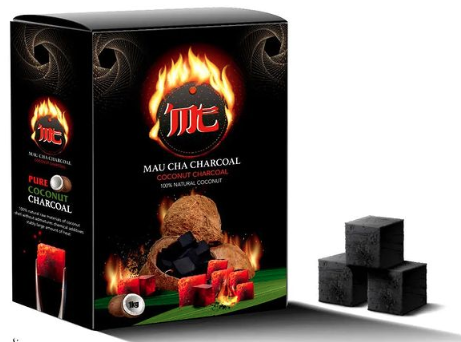Biofuel made from coconut shell charcoal is organic and safe for the environment. In comparison to firewood, kerosene, and other fossil fuels, it is the finest fuel replacement. Coconut charcoal briquettes are used as hookah coals in countries around the Middle East, including Saudi Arabia, Lebanon, and Syria. Premium coconut charcoal in Indonesia is made by PT Mau Cha Group exclusively from raw, unprocessed coconut shell.
Collecting a lot of coconut shells is the initial step in creating a productive line for making coconut charcoal briquettes.
After consuming coconut milk, people frequently throw away the coconut shells. Many coconut shells are stacked up on the sides of the road, in marketplaces, and in processing facilities in many tropical nations that are abundant in coconuts.
A tropical environment supports the 3.4 million hectares of coconut plantations in Indonesia. The primary locations for collecting coconuts are Sumatra, Java, and Sulawesi. One may find plenty of coconut shells in these locations since the price of coconut shells is so low.
The steps involved in creating coconut shell charcoal are: carbonizing, crushing, mixing, drying, briquetting, and packing.
Carbonizing
Coconut shells should be placed in a carbonization furnace and heated to 1100°F (590°C) before being carbonized at high temperatures and pressures without any oxygen.
Charcoal Coconut shell is either broken into fragments or retains its shell form after carbonization. Use a hammer crusher to reduce them to 3-5 mm powders before briquette-making.
Coconut charcoal powder is simpler to shape and might lessen machine wear. The simpler it is to squeeze material into charcoal briquettes, the smaller the particle size.
Mixing
Since carbon coconut powder lacks viscosity, a binder and water must be added to the charcoal granules. Then combine them with a mixer.
Use natural, food-grade binders like maize starch and cassava starch as the initial step. They are completely devoid of chemicals and do not contain any fillers, such as anthracite or clay. The binder ratio is typically 3–5%.
Water: Charcoal moisture after mixing should be between 20 and 25 percent. Take a handful of hand-pinch able mixed charcoal. If the charcoal powder stays in place, the humidity level is at the required level.
Mixing: The better the briquettes are blended, the better their quality.
Drying
Coconut charcoal powder can be dried to have a water content of less than 10%. It burns more effectively the lower the moisture content.
Briquetting
The carbon coconut powder is sent to a roller-type briquette machine after drying. The powder forms balls under conditions of high pressure and temperature before smoothly discharging from the machine.
Briquettes made of coconut are the ideal substitute for regular charcoal.
Coconut shell charcoal provides several advantages over conventional charcoals, including the following:
It is entirely natural biomass charcoal and has no additional chemicals.
Simple ignition owing to distinctive form.
Burn time that is constant, even, and predictable.
Increased burn time: It has a minimum burn time of three hours, which is six times longer than that of conventional charcoal.
The ideal green fuel for the barbecue system is coconut bbq charcoal, which is the perfect update.
For more Info:-
coconut shell charcoal suppliers
Natural Coconut Shell Charcoal





Comments